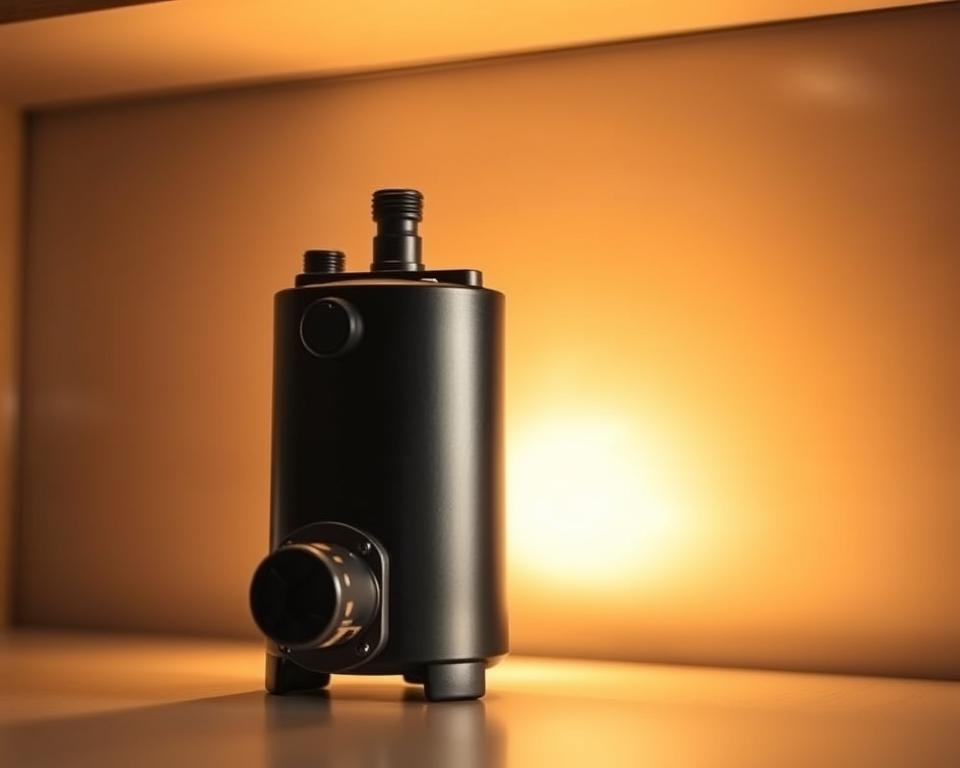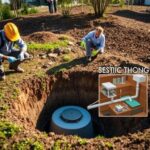Camper Water Tank & Pump: – Must-Read Manual
Have you ever considered what makes an on-the-road adventure problem-free? It’s fundamentally tied to your RV water Tank & Pump. If you’re venturing into national parks or just a weekend retreat, understanding your RV’s water system is vital. This article we dive into the basics: the components, servicing, and tips for trouble-free travel. Understanding each element, from the linework to reservoir filling, ensures water is always available during your excursions – RV black water pump.
Main Points
- Mastering the RV fresh-water setup improves your travel adventure.
- The RV fresh-water Tank & Pump are central for a steady water supply.
- Routine servicing protects the longevity of your RV plumbing.
- Knowing the right way to top up your Tank properly can avert future issues.
- Fixing your water Pump can save you from sudden problems.
Getting to Know RV Water Systems
RV water systems consist of two primary parts: the potable-water setup and the wastewater mechanism. The fresh side houses several critical pieces like the water Tank, Pump, and faucets, resembling domestic plumbing but adapted to the ever-changing needs of life on wheels.
Ensuring safe water is essential for the system’s performance. It guarantees the health of all passengers. It’s vital to keep the RV plumbing in prime condition through regular maintenance – including proper drainage to prevent leaks and other faults. Frequent inspections let RV enthusiasts dodge water-related mishaps during their journeys.

The Importance of the RV Water Tank
The RV water Tank is central for a successful journey. It stores the fresh water needed for drinking, cooking, and cleaning. The capacity of this container changes with each RV model, determining how much water can be stored – and has a direct bearing on how long you can travel before requiring a refill.
Maintaining the RV water Tank sanitary is critical. Periodic cleaning wards off harmful contaminants, ensuring water stays safe for use. Ignoring maintenance can encourage bacteria or algae growth, making the water hazardous.
Appreciating the RV water Tank’s role improves water management on the road. Diligent upkeep and timely refills deliver a care-free experience. It’s key to have ample water for all travel needs, guaranteeing a trouble-free RV adventure.
How to Fill Your RV Fresh-Water Tank
Filling your RV water Tank requires meticulous action to ensure it’s done correctly. There are two primary methods: gravity filling and city-pressure filling. Perfecting these techniques noticeably improves your RV experience.
Gravity filling is direct. You just need a food-grade water hose. Hook up this hose to a water source, then to the fill opening, and let gravity take over. Always monitor the water level to avoid spills.
Pressure filling relies on a city water connection, offering faster delivery. You need to use a pressure regulator to govern water flow. Connect the hose from the municipal source to your RV. This approach provides speedy and steady supply to your reservoir.
Whichever approach you use, remember these vital safety tips: Always monitor the fill when filling to prevent overflow, and draw only clean water to avoid health issues. Mastering these filling and safety techniques will make your RV trips even more enjoyable.
RV Water System: Core Elements Unpacked
The RV Tank-and-Pump combo are crucial to any RV’s plumbing system, ensuring a consistent and efficient water supply for all your needs. The RV water Pump’s main job is to draw water from the Tank, ensuring clean water is always available. That’s critical for cooking, cleaning, and showering.
RV plumbing offers different Pump types, each with unique benefits. Diaphragm pumps are favoured for their consistent water pressure, while centrifugal pumps are loved for ease and efficiency. It’s essential to weigh flow rate, noise, and installation ease when choosing your Pump.
To sum up, the RV Tank-Pump pair are irreplaceable to your water system’s functioning. A dependable Pump secures strong pressure and smooth flow, enhancing your overall travel experience.
Choosing the Best-Fit RV Pump
Finding the appropriate RV water Pump is essential for your plumbing’s peak performance. When shopping for a Pump, weighing several points is crucial for a satisfying camping experience. Ensuring it matches your RV’s water system is paramount.
Keep these primary aspects in mind:
- Flow Rate: Choose a Pump with a flow rate that meets your usage needs. A higher flow means faster reservoir refills.
- Pressure Ratings: Your RV’s different fixtures set the required pressure levels. Pick a Pump whose specs match those needs for smooth operation.
- Noise Levels: Noise can be an issue with some Pumps. For a calm cabin, contrast models for their noise output.
Brands like SHURflo and VEVOR are high on the list for many RVers, providing stand-out perks. A detailed assessment of these brands will assist your selection process.
Understanding these factors is not only important for the right purchase but also arms DIY enthusiasts with essential know-how for upkeep and replacements.
Connecting to City Water for Your RV
Hooking your RV to city water provides an effortless supply of fresh water, freeing you from just using your Tank. This ensures a more comfortable camping experience. Make sure to follow specific steps for a successful hookup.
First, find the city water connection port on your RV. It’s commonly marked by a bright or black connector, sometimes labelled for ease. Use a potable water hose rated for RVs; this kind of hose protects your water safe from contaminants.
It’s essential to install a pressure regulator before making the connection. This gadget protects your plumbing by moderating the water pressure. With the regulator in place, link the hose from it to the water source.
Once connected, monitor the water pressure. Maintain a steady, gentle flow to avoid hose damage. Check your hoses regularly for any wear or leaks and quickly replace parts as needed.
Adhering to these steps for city hookup improves your camping convenience and assists in maintaining your RV’s condition.
Maintaining Your RV Water Tank
Keeping your RV’s water Tank is properly maintained is essential for safe, clean water while out on adventures. A well-maintained Tank avoids bacterial growth and contamination. First up, periodically sanitise the Tank: combine water with a bit of bleach for an effective residue-free clean.
It’s crucial to check leaks and monitor Tank pressure. Routine checks can identify problems early, sparing expensive fixes. A consistent regimen maintains the water system in prime condition.
To optimise maintenance, use a checklist:
- Check water levels and quality frequently.
- Sanitise the Tank every six months with a bleach solution.
- Inspect for seepage in the Tank.
- Monitor Tank pressure and Pump function.
- Flush the Tank to remove any sediment buildup.
RV Water Pump Troubleshooting
RV water Pump glitches can be annoying, disrupting travel plans without warning. Facing strange noises, dealing with low pressure, or facing complete Pump failure are common problems. Learning how to troubleshoot them can greatly enhance your trips.
If you hear odd sounds from your Pump often signals a problem. Start : check for loose connections and secure them. When confronted with low water pressure, checking hoses and fittings for leaks. Even a small leak can greatly affect flow, early troubleshooting is essential.
If your Pump stops altogether, check electrical connections. Start with examining the Pump’s fuse. Should the fuse is fine, continue diagnosing for wear or damage.
A methodical approach identifies and rectifies water system issues. Routine maintenance and inspection ensure smoother journeys.
| Issue | Possible Cause | Suggested Solution |
|---|---|---|
| Strange Noises | Loose connections | Tighten fittings |
| Low Pressure | Leaky hoses/fittings | Find & seal leaks |
| Pump Failure | Electrical fault | Check fuse/wiring |
| No Water Flow | Blocked lines | Flush obstructions |
Best Practices for Effective RV Water Use
Camping in isolated areas often means limited water access. Wise use in your RV is key. By embracing smart conservation tactics, you not only manage resources well but also elevate camping satisfaction.
For maximum efficiency of water on the road, try these tips:
- Take quick showers – aim for under five minutes.
- Install water-saving fixtures like low-flow showerheads and faucets.
- Reuse used water: dishwater can flush toilets or water plants.
- Monitor reservoir levels regularly to avoid overflow.
- Plan water stops in advance: know filling stations along your route.
The Bottom Line
Grasping the nuts and bolts of your RV water systems is central to a satisfying travel adventure. The water Tank & Pump are at the centre of this, needing consistent upkeep. By servicing these systems, you ensure a dependable supply and sidestep potential snags.
Consistent troubleshooting and checks limit stress and spare time. Being proactive about upkeep is essential, especially when you’re miles away from help. Proper care lets you to maximise water use, boosting comfort for everyone.
When you head out, use this guide to master your RV’s water systems. Smart decisions about plumbing and equipment equip you to enjoy the freedom of the road. Enjoy joyous and memorable travels ahead!

